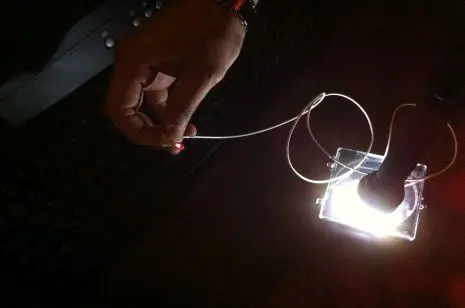Engineering researchers at the University of Arkansas have achieved the highest efficiency ever in a 9 millimeter-squared solar cell made of gallium arsenide. After coating the cufflink-sized cells with a thin layer of zinc oxide, the research team reached a conversion efficiency of 14 percent.
A small array of these cells – as few as nine to 12 – generate enough energy for small light-emitting diodes and other devices. But surface modification can be scaled up, and the cells can be packaged in large arrays of panels to power large devices such as homes, satellites, or even spacecraft.
The research team, led by Omar Manasreh, professor of electrical engineering, published its findings in Applied Physics Letters and the April 2014 issue of Solar Energy Materials and Solar Cells.
An alternative to silicon, gallium arsenide is a semiconductor used to manufacture integrated circuits, light-emitting diodes and solar cells. The surface modification, achieved through a chemical synthesis of thin films, nanostructures and nanoparticles, suppressed the sun’s reflection so the cell could absorb more light. But even without the surface coating, the researchers were able to achieve 9-percent efficiency by manipulating the host material.








